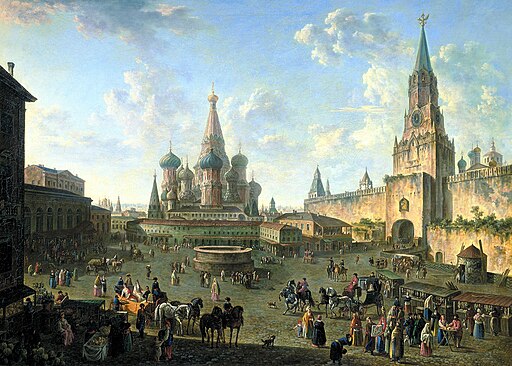
“The Massacre at Chios” by Eugène Delacroix is a massive painting showing the horror and destruction visited on the Island of Chios. A display of suffering, military might, ornate costumes, terror, and death in a scene of widespread desolation.
There is no heroic figure to counterbalance the massacre and the hopelessness of the victims, and there is no suggestion of hope among the ruin and despair.
The painting reflects the reality of the Chios massacre and represents the killing of twenty thousand citizens, and the forced deportation into slavery of almost all the surviving seventy thousand inhabitants by Ottoman troops during the Greek War of Independence in 1822.
Ottoman soldiers were ordered to kill all infants under three years old, all men 12 years and older, and all women 40 and older, except those willing to convert to Islam.
The wholesale massacre provoked international outrage and led to increasing international support for the Greek cause for Independence.
Chios Massacre
Chios is the fifth largest of the Greek islands, and the Chios Massacre describes the killing of tens of thousands of Greeks on the island by Ottoman troops during the Greek War of Independence in 1824.
Chios for thousands of years was prominent in trade and diplomacy throughout the Black Sea, the Aegean, and the Mediterranean.
In recognition of Chios’ central economic role, the Ottoman Empire allowed Chios almost complete control over its internal affairs as Chios’ trade and the very highly-valued mastic plant harvested only on Chios were of great economic value to the empire.
During the Greek War of Independence, the island’s ruling classes were reluctant to join the Greek revolt, fearing the loss of their freedom, security, and prosperity.
The leaders were concerned that they were located too close to the heartland of Turkish Anatolia. Chios is only 6.7 kilometers (4.2 mi) from the Anatolian mainland.
However in 1822, as the Greek revolt gathered strength on the Greek mainland, several hundred armed Greeks from the neighboring island of Samos landed in Chios to attack the Turks, who retreated to their island citadel.
Many Chios islanders decided to join the revolution; however, the majority of the population did not join the revolt against the Ottoman Empire.
Reinforcements in the form of a Turkish fleet was quickly deployed to the island, and they immediately pillaged and looted the town.
Orders were given to burn down the town, and when 40,000 Turkish troops had arrived, and they were ordered to massacre the majority of the inhabitants. Following the massacre, Chios never regained its commercial prominence.
Eugène Delacroix
Eugène Delacroix was an artist regarded as the leader of the French Romantic school. Delacroix’s use of expressive brushstrokes shaped the work of the Impressionists, while his passion for the exotic inspired the artists of the Symbolist movement. Dramatic and romantic content characterized the central themes which led him to travel in North Africa, in search of the exotic.
Initial Critical Reactions to “The Massacre at Chios” by Eugène Delacroix
- When first exhibited, some critics charged that Delacroix portrayed the brutal occupiers too sympathetically.
- Ingres stated that the painting exemplified the ‘fever and epilepsy’ of modern art.
- Another critic called it “the massacre of painting.”
The Massacre at Chios
- Title: The Massacre at Chios
- French: Scène des massacres de Scio
- Artist: Eugène Delacroix
- Date: 1824
- Media: Oil on Canvas
- Dimensions: 419 cm × 354 cm (164 in × 139 in)
- Type: History Painting
- Museum: The Louvre
Eugène Delacroix
- Name: Ferdinand Victor Eugène Delacroix
- Born: 1798 – Charenton-Saint-Maurice, Île-de-France, France
- Died: 1863 (aged 65) – Paris, France
- Movement: Romanticism
- Masterpieces:
- The Massacre at Chios
- The Death of Sardanapalus(Philadelphia Museum of Art)
- The Death of Sardanapalus (Louvre Museum)
“The Massacre at Chios” by Eugène Delacroix
A Tour of History Paintings
- “Washington Crossing the Delaware” by Emanuel Leutze
- “The Family of Darius before Alexander” by Paolo Veronese
- “Las Meninas” or “The Ladies-in-Waiting” by Diego Velázquez
- “The Third of May 1808″ by Francisco Goya
- The Second of May 1808 – The Charge of the Mamelukes by Francisco de Goya
- “The Fighting Temeraire” by Joseph Mallord William Turner
- “Westward the Course of Empire Takes Its Way” by Emanuel Leutze
- “The Capture of the Hessians at Trenton, December 26, 1776″ by John Trumbull
- “The March to Valley Forge” by William B. T. Trego
- “The Massacre at Chios” by Eugène Delacroix
- “The Execution of Lady Jane Grey” by Paul Delaroche
- “Cromwell in Battle of Naseby” by Charles Landseer
- “The Surrender of Breda” by Diego Velázquez
- “Hannibal and his Army Crossing the Alps” by J. M. W. Turner
- “The Death of Marat” by Gioacchino Giuseppe Serangeli after Jacques-Louis David
- “Oath of the Horatii” by Jacques-Louis David
- “The Coronation of Napoleon” by Jacques-Louis David
- “The Burning of the Houses of Lords and Commons by J. M. W. Turner
- “The Burning of the Houses of Parliament” by J. M. W. Turner
- “The Triumph of Cleopatra” by William Etty
- “Dempsey and Firpo” by George Bellows
- Floreat Etona! by Elizabeth Thompson
- Scotland Forever! by Elizabeth Thompson
‘The Massacre at Scios’ by Delacroix
The Massacre of 1822
Chios 1822
~~~
“The greatest deception men suffer is from their own opinions.”
– Leonardo da Vinci
~~~
Photo Credit 1)Eugène Delacroix [Public domain], via Wikimedia Commons
Popular this Week








 Sponsor your Favorite Page
Sponsor your Favorite Page SEARCH Search for: Search Follow UsJoin – The JOM Membership Program
Sponsor a Masterpiece with YOUR NAME CHOICE for $5
Share this:
- Tweet
